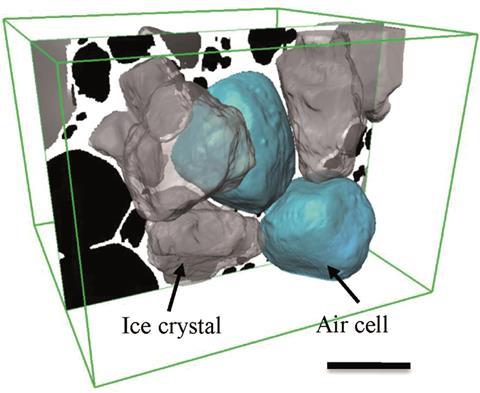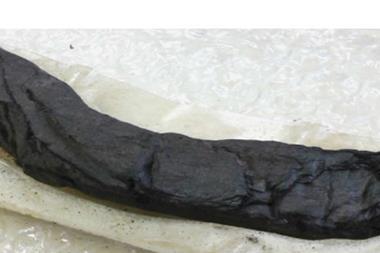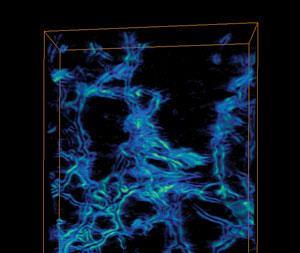First in-depth study of the multiphase 3D structure of ice cream possible with new experimental design

Researchers from the UK have developed a new 3D x-ray tomography (XRT) method to visualise the effects of changing temperature on the microstructure of ice cream.1
Ice cream is a mixture of milk, fats, sugars, proteins, emulsifiers, stabilisers and flavours that are aerated and then frozen to form a soft solid comprising about 30% ice, 50% air, and 5–15% fat droplets suspended in a sugar solution. Its quality depends on the size of its ice crystals and air bubbles: smaller crystals and bubbles make it smoother and creamier. And since this complex colloid is unstable above –30˚C, its microstructure will change during shipping and storage (domestic freezers are usually at around –18˚C), which will affect its taste and texture.
Most techniques can only view ice cream in 2D slices or they alter its structure during analysis. Researchers have used XRT to study ice cream’s 3D structure before2 but had to use a chemical contrast agent for resolution below 10µm. This new XRT technique, developed by Peter Lee and Enyu Guo from the University of Manchester and colleagues, has three enhancements over previous methods: it keeps samples cold to eliminate changes from temperature fluctuations, it provides better contrast between the solid, liquid and gas phases, and it has improved imaging software to reduce noise. It therefore gave higher resolution images that were more accurate than previous XRT results.
Lee and Guo slowly heated then cooled ice cream from –15 to –5˚C and back again over two weeks. Using their new technique, they saw ice crystals in the ice cream coarsen as they grew, but also that growing and interconnecting air bubbles hampered the growth of ice crystals. This means that air bubbles could be a useful tool for manufacturers to prolong the shelf-life of ice cream.
References
1 E Guo et al, RSC Adv., 2017, 7, 15561 (DOI: 10.1039/c7ra00642j) This article is open access.
2 B R Pinzer et al, Soft Matter, 2012, 8, 4584 (DOI: 10.1039/c2sm00034b)

















No comments yet